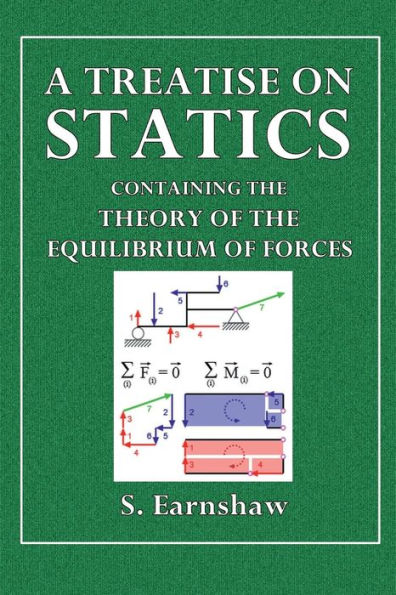A Treatise of Statics, Containing the Theory of Equilibrium of Forces
An excerpt from the INTRODUCTION.
DEFINITIONS AND PRELIMINARY NOTIONS. 1. In the Science of Mechanics of which Statics forms a part, matter is considered as essentially possessing extension, figure and impenetrability. The least conceivable portion of matter is called a particle. 2. We conceive of matter that it can exist either in a state of rest, or motion. If then matter, once at rest, pass into a state of motion, the change, not being essential to the existence or nature of matter, is of necessity ascribed to some agent, which, as to its nature, is essentially independent of the matter influenced. Whether this agent reside in the matter influenced, or in external objects, or in both, are questions which can only be answered after experimental investigation. This agent is called force; and it will be perceived from this statement, that a force is judged of entirely by the effects which it produces: and hence, if in the same circumstances two forces produce equal effects, we infer that the forces are equal. 3. It is assumed, that the effect of two equal forces acting in concert, is double the effect of one of them three, treble; and so on.
1137303197
DEFINITIONS AND PRELIMINARY NOTIONS. 1. In the Science of Mechanics of which Statics forms a part, matter is considered as essentially possessing extension, figure and impenetrability. The least conceivable portion of matter is called a particle. 2. We conceive of matter that it can exist either in a state of rest, or motion. If then matter, once at rest, pass into a state of motion, the change, not being essential to the existence or nature of matter, is of necessity ascribed to some agent, which, as to its nature, is essentially independent of the matter influenced. Whether this agent reside in the matter influenced, or in external objects, or in both, are questions which can only be answered after experimental investigation. This agent is called force; and it will be perceived from this statement, that a force is judged of entirely by the effects which it produces: and hence, if in the same circumstances two forces produce equal effects, we infer that the forces are equal. 3. It is assumed, that the effect of two equal forces acting in concert, is double the effect of one of them three, treble; and so on.
A Treatise of Statics, Containing the Theory of Equilibrium of Forces
An excerpt from the INTRODUCTION.
DEFINITIONS AND PRELIMINARY NOTIONS. 1. In the Science of Mechanics of which Statics forms a part, matter is considered as essentially possessing extension, figure and impenetrability. The least conceivable portion of matter is called a particle. 2. We conceive of matter that it can exist either in a state of rest, or motion. If then matter, once at rest, pass into a state of motion, the change, not being essential to the existence or nature of matter, is of necessity ascribed to some agent, which, as to its nature, is essentially independent of the matter influenced. Whether this agent reside in the matter influenced, or in external objects, or in both, are questions which can only be answered after experimental investigation. This agent is called force; and it will be perceived from this statement, that a force is judged of entirely by the effects which it produces: and hence, if in the same circumstances two forces produce equal effects, we infer that the forces are equal. 3. It is assumed, that the effect of two equal forces acting in concert, is double the effect of one of them three, treble; and so on.
DEFINITIONS AND PRELIMINARY NOTIONS. 1. In the Science of Mechanics of which Statics forms a part, matter is considered as essentially possessing extension, figure and impenetrability. The least conceivable portion of matter is called a particle. 2. We conceive of matter that it can exist either in a state of rest, or motion. If then matter, once at rest, pass into a state of motion, the change, not being essential to the existence or nature of matter, is of necessity ascribed to some agent, which, as to its nature, is essentially independent of the matter influenced. Whether this agent reside in the matter influenced, or in external objects, or in both, are questions which can only be answered after experimental investigation. This agent is called force; and it will be perceived from this statement, that a force is judged of entirely by the effects which it produces: and hence, if in the same circumstances two forces produce equal effects, we infer that the forces are equal. 3. It is assumed, that the effect of two equal forces acting in concert, is double the effect of one of them three, treble; and so on.
9.99
In Stock
5
1

A Treatise of Statics, Containing the Theory of Equilibrium of Forces
246
A Treatise of Statics, Containing the Theory of Equilibrium of Forces
246Paperback
$9.99
9.99
In Stock

Product Details
| ISBN-13: | 9781663527530 |
|---|---|
| Publisher: | Barnes & Noble Press |
| Publication date: | 07/06/2020 |
| Pages: | 246 |
| Product dimensions: | 6.00(w) x 9.00(h) x 0.56(d) |
From the B&N Reads Blog
